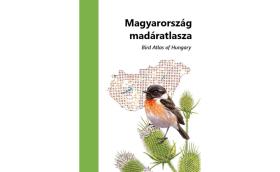Bird Atlas of Hungary

Magyarország madáratlasza borító
After nearly ten years of preparation the Bird Atlas of Hungary was published at the end of September 2021. The book summarizes all available knowledge about the population, distribution, population dynamics and conservation status of 420 bird species that occurred naturally in Hungary until the end of 2019.
30 million data records collected by hundreds of birdwatchers were processed by modern computer modelling, generating 1,700 maps and graphs. 64 authors wrote descriptions, giving the most complete picture of the situation of wild birds of Hungary in a book spanning 800 pages.
The printing of the first edition of the book was financed by the Ministry of Agriculture as a beneficiary organization of the project KEHOP-4.3.0.-VEKOP-15-2016-00001, entitled „Strategic studies on long-term conservation of natural values of Community importance and the national implementation of the EU Biodiversity Strategy 2020”.
The second, revised edition of Bird Atlas of Hungary can be purchased in the webshop of the MME.
The entire material of the book can be read in digital form by clicking on the cover image below!

Use of documents and data on the website, recommended citation
The materials and data on the website may be utilized for research, nature conservation and educational purposes, providing the source:
Szép T., Csörgő T., Halmos G., Lovászi P., Nagy K. & Schmidt A. (eds.) 2022. Magyarország madáratlasza. [Bird Atlas of Hungary] 2nd, revised edition. – Agrárminisztérium, Magyar Madártani és Természetvédelmi Egyesület, Budapest. madaratlasz.mme.hu
In case of use for research purposes, we recommend prior consultation with the MME Monitoring Center (monitoring@mme.hu), and we ask that publications (articles, dissertations, etc.) be sent there. The consent of the MME Monitoring Center (monitoring@mme.hu) is required for the business use of the processed and basic data prior to its utilisation.
A table lists the species, can be used as a search engine to open book chapters of each species.
Downloadable e-annexes:
E-annex 3: breeding density modelling
E-annex 4: winter density modelling
E-annex 5: breeding trend index
E-annex 6: wintering trend index
E-annex 9: population estimation

